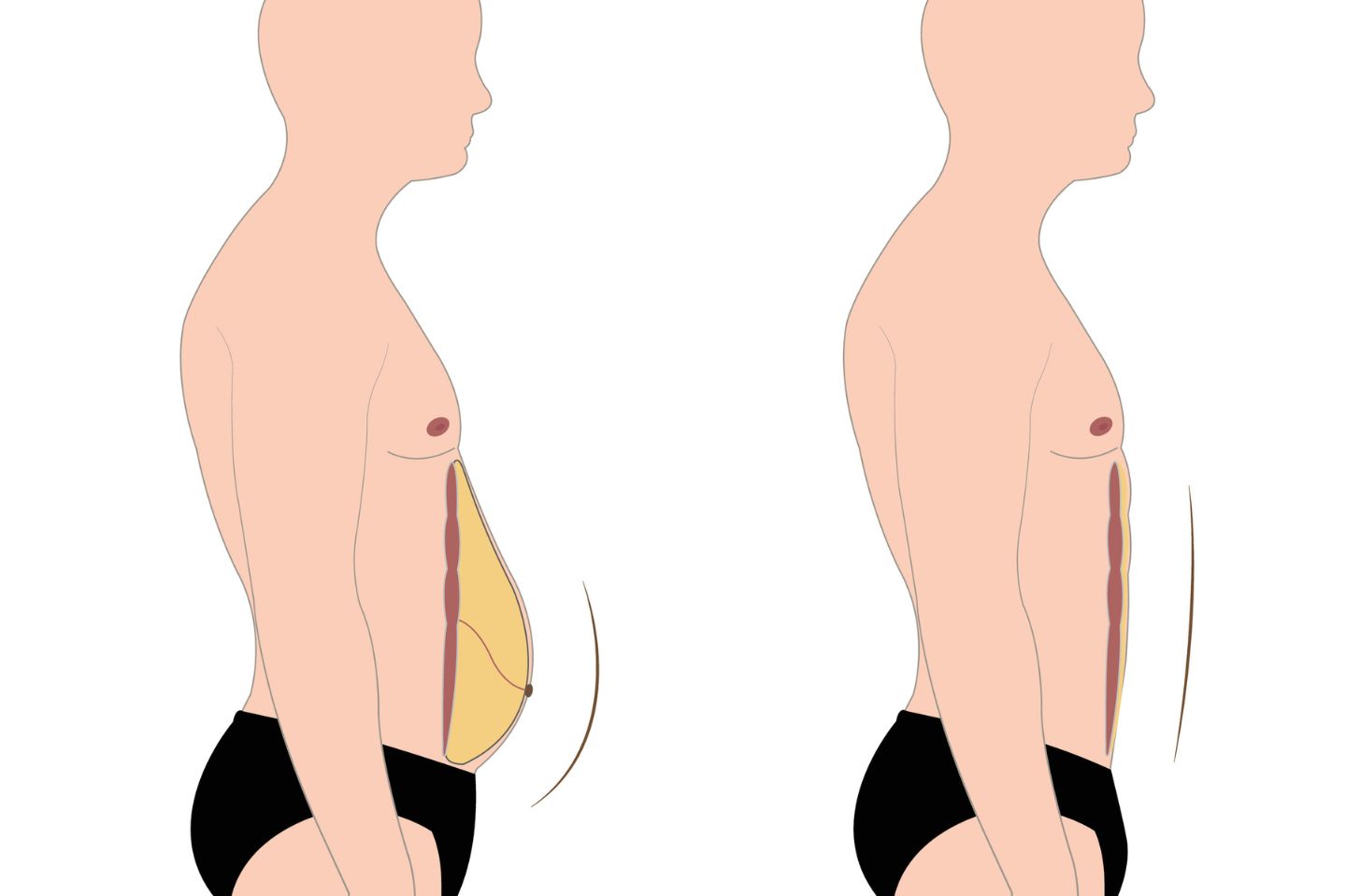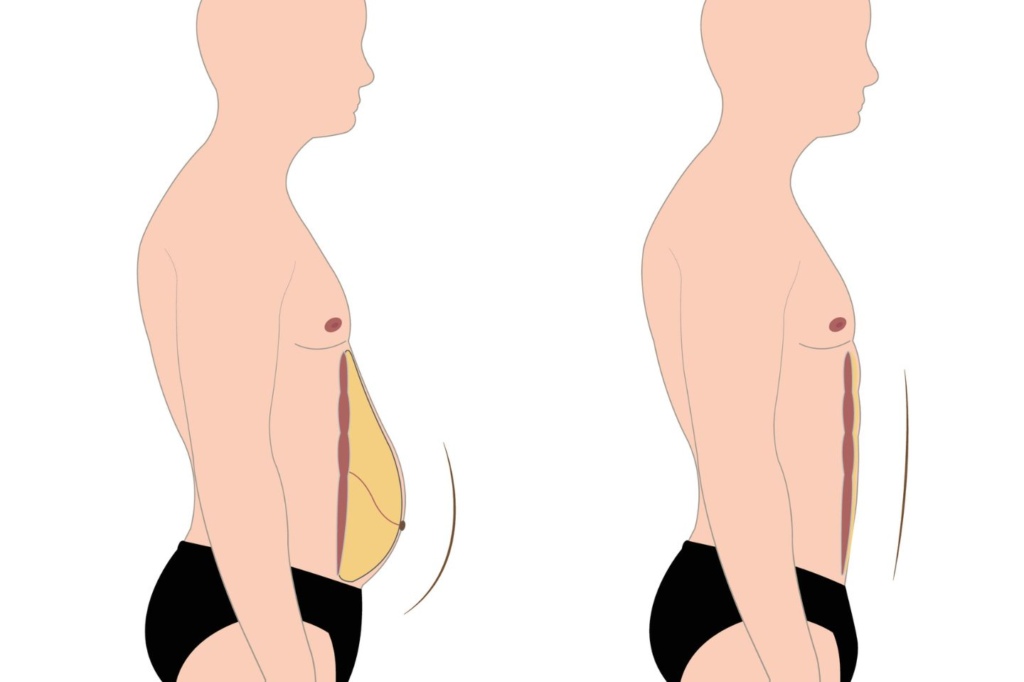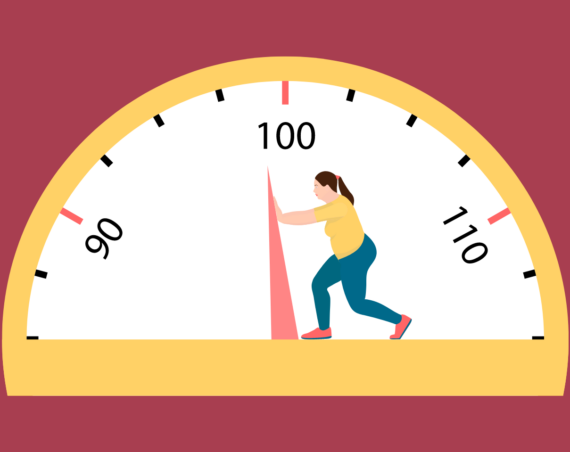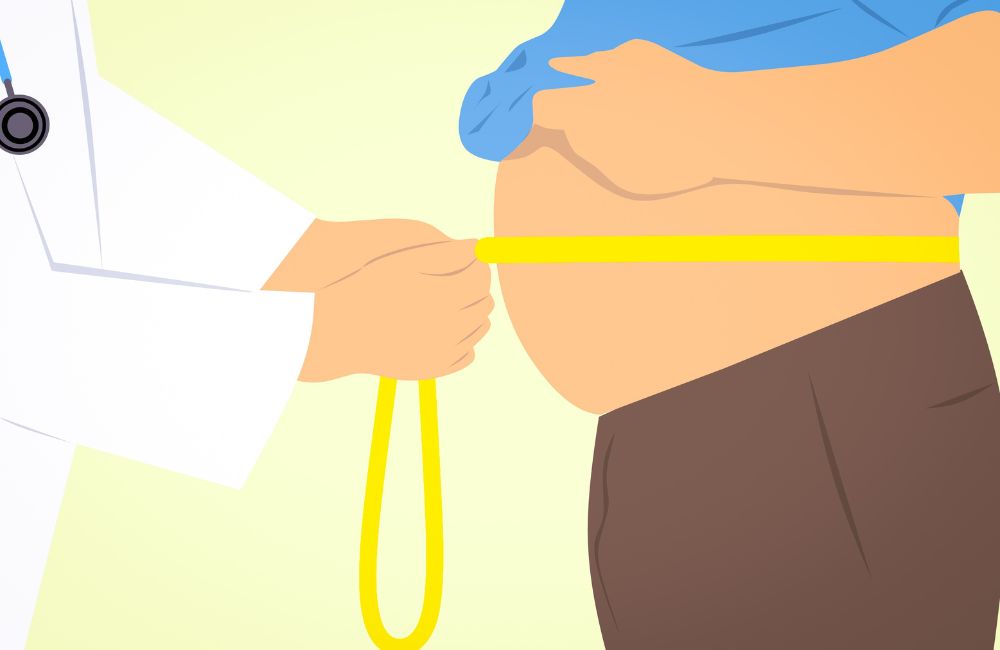
Dealing with lower belly fat can be a daunting challenge, as it tends to cling stubbornly. Yet, there are effective strategies to conquer this stubborn bulge.
Lower belly fat, or the ‘pooch,’ is a common concern for many. Its deeper location in the abdomen, near vital organs, poses health risks such as diabetes and cardiovascular issues.
Given these risks, it’s crucial to take proactive steps to reduce lower belly fat for the sake of overall health and well-being.
You’ll also like:
- 32 Foods That Burn Belly Fat Fast, Says a Nutritionist
- 10 Best Exercises to Lose Belly Fat Fast, Says a PT
What Causes Lower Belly Fat?

Lower belly fat, like excess fat elsewhere in the body, can result from various factors. It tends to accumulate in this area for many individuals.
Genetics, lifestyle choices, and diet play significant roles in the development of belly fat. While it can be stubborn, there are actionable steps you can take to address this issue and mitigate associated health risks.
Ready to banish your belly fat for good? Here are some effective steps you can take now.
How to Lose Lower Belly Fat
While spot reduction of fat isn’t possible, targeted efforts can lead to a significant reduction in belly fat. To achieve this, focus on exercise, diet, and lifestyle adjustments.
Exercise plays a crucial role in building lean muscle, boosting metabolism, and promoting fat burning. Incorporate a variety of exercises to target different muscle groups and enhance overall fat loss.
A clean and balanced diet is essential for providing your body with the right nutrients while maintaining a healthy calorie balance. Emphasize whole foods, lean proteins, fruits, and vegetables to support your weight loss goals.
Additionally, lifestyle factors such as managing stress levels, prioritizing quality sleep, and staying active throughout the day can also contribute to reducing lower belly fat.
By adopting a holistic approach that encompasses exercise, nutrition, and lifestyle changes, you can effectively tackle lower belly fat and improve your overall health
1. Eat Nutrient-Dense Foods
The most effective approach to reducing tummy fat is to carefully consider both the quantity and quality of food consumed.
Increasing the intake of nutrient-dense foods, particularly vegetables and whole foods, is a highly beneficial strategy.
Vegetables are rich in essential micronutrients such as vitamins, minerals, and phytochemicals, which are natural compounds that plants produce to defend against pathogens. While further research is needed to fully understand their benefits to humans, it’s generally advised to obtain phytochemicals through whole foods rather than supplements.
Incorporating real foods like fruits (such as pears, avocados, and apples), whole grains (including pasta, bread, lentils, crackers, and quinoa), and lean protein sources like chicken breast, lean beef, and fatty fish into your diet provides a balanced mix of simple and complex carbohydrates and essential nutrients.
These nutrients not only supply energy for bodily functions and cognitive processes but also support tissue repair and promote a feeling of satiety, aiding in weight management and reducing lower belly fat.
2. Add More Fiber
There are two types of fiber. The soluble fiber and insoluble fiber.
The type of fiber with the most health benefits is soluble fiber, it helps the digestive system, blood sugar levels, cholesterol levels, and weight maintenance.
Unfortunately, most people do not get enough fiber in their diet.
In your digestive system, this type of fiber can dissolve in water creating a gel-like consistency. This gel absorbs the water along the digestive system and allows for the bulking of your stools keeping you from becoming constipated or having diarrhea.
Fiber also helps lower blood sugar levels by slowing down the absorption of sugar into the bloodstream.
Cholesterol levels are improved by soluble fiber, specifically the bad LDL cholesterol by trapping the fatty molecules and not allowing them to be absorbed into the bloodstream and rather be excreted with the stool.
Weight maintenance can be achieved with soluble fiber with the feeling of fullness.
Vegetables are a great source of fiber and should be a key component of your diet even if you’re not trying to lose body fat.
But you can also find soluble fiber in grains, oats, nuts, apples, beans, blueberries, quinoa, brown rice, and potatoes.
The fiber intake recommendation is 25-30 grams of soluble fiber per day.
3. Increase Protein Consumption
To help with weight maintenance, high protein intake is essential for long-term results. What is important to know is that the healthiest protein is lean protein.
Proteins have multiple functions, such as keeping you full longer which in turn controls your appetite.
It also helps with balancing sugar levels in your blood, amino acids as building blocks of tissue, and as another type of energy source.
By balancing the sugar levels in your blood, you minimize fat storage. And by controlling your appetite you decrease any excess calories.
Good sources of protein, legumes, Greek yogurt, nuts, seeds, eggs, fish, chicken, and lean meats.
You can also find protein in beverages, milk, soy milk, and almond milk.
The recommended grams of protein is usually 0.8-1.0 grams of protein per kilogram.
4. Decrease Foods That Cause Inflammation
All foods in balance are healthy, but there are a few that cause inflammation in our bodies.
Which can then increase lower abdominal fat.
Some foods that promote inflammation include the saturated fat found in meat and dairy products, fast food, junk food, fried food, palm oil, and foods with trans fats (usually processed foods).
The good news is that some foods aid the inflamed body. Lowering inflammation can be achieved by increasing unprocessed foods.
Good diet tips: Choose foods with unsaturated fats, such foods are the oil in fish oils, nuts, and flaxseed these carry the famed omega-3 fatty acids.
Also, olive oil, avocado oil fruits and vegetables, mushrooms, legumes, whole grains, teas, and spices.
5. Add Physical Activity to Your Day
Exercise complements nutrition in achieving overall health and weight loss goals. Daily physical activity not only uplifts mood and mental clarity but also aids in weight management by promoting the growth of lean muscle mass and burning excess energy.
Regular movement stimulates muscle development, leading to increased energy expenditure. Seeking guidance from a personal trainer can be beneficial if you’re unsure about how to incorporate fitness into your routine.
A trainer can assist in identifying areas for improvement, ensuring proper form, and optimizing muscle growth to enhance your physique.
While there’s no specific “lower belly fat workout,” certain types of exercises are effective for fat loss. These include aerobic exercises (such as cardio), strength training, resistance training, and high-intensity interval training (HIIT)
6. Add More Cardio to Your Routine
It is recommended to get at least 150 minutes of cardio sessions per week, this is an effective way to get you in a routine but also to help your cardiovascular health.
Aerobic exercise can be as simple as walking, walking on a treadmill, jogging, a low-intensity long run, using a jump rope, or any other activity that gets your heart rate up.
Regular cardio workouts will not only help you burn abdominal fat (visceral fat) but will also decrease your risk of heart disease.
7. Add Strength Training to Your Routine
Besides helping with fat loss, strength training does more. It helps with bone health, improves metabolism, and reduces risk factors for chronic conditions.
According to the Centers for Disease Control guidelines, strength training workouts can be done at least twice per week, focusing on the major muscle groups.
Muscle groups to focus on:
- Chest, back, and lower back muscles (torso)
- Arm and shoulder muscles
- Ab muscles
- Glutes, Quads, Hamstrings
With this type of workout, you can use your body weight, free weights, and weight machines.
You can do a 15-minute total-body workout with a combination of pushups, pull-ups, planks, knee planks, squat jumps, lunges, Russian twists, crunches, burpees, mountain climbers, and hip flexors.
All of these exercises work your entire midsection. They help burn and get rid of abdominal fat.
You can also lift weights like barbells, and dumbbells or use a medicine ball and a kettlebell.
With the weight machines, where you can do leg presses, chest presses, and seated leg extensions.
Exercises that include barbells for example:
- Barbell back squats
- Barbell front squat
- Barbell lunges
- Deadlifts
Working with a set of dumbbells:
Exercises with dumbbells:
- Dumbbell squats
- Goblet squats
- Lunges
You can also use a kettlebell:
- Kettlebell swing single-handed
- Kettlebell swing two hands
- Kettlebell swing changing hands
8. Add Core Exercises to Your Workout
The wish is to be able to work out only the target muscles for spot reduction, unfortunately, it doesn’t work that way.
To target your abdomen, you need to do a whole-body workout. But you can do abdominal exercises to help strengthen it.
Workouts that target all angles such as the upper abs, lower abs, obliques, and rectus abdominis can be performed. Also, an overall workout like Pilates can be helpful for abs.
These core exercises can be crunches for the upper abs, plank knee-to-nose or mountain climbers for the lower abs, and side planks for the obliques.
9. Include High-Intensity Exercise (HIIT)
One way to help decrease overall body fat is to try out a high-intensity exercise like the well-known high-intensity interval training (HIIT) several times a week.
This type of training alternates from intense bursts of movement to lower intensity or rest periods, thus the intervals.
The point is to get your heart rate up during those bursts.
Because you’ll be burning a lot of calories in the form of energy, you’ll see your lower abdomen flatten and your overall body fat percentage go down as well.
Good examples of HIIT workouts:
- Burpee
- Mountain Climbers
- Running
- Squat jumps
- Medicine ball slam
Keep in mind that high intensity during workouts can be dangerous, consult with your doctor first before starting this type of fitness routine.
10. Change Your Lifestyle
Other very important factors in lower belly fat loss, are related to your lifestyle.
A good idea is to start thinking about healthy habits, they are essential to be on a routine that helps your body stay away from temptations.
Therefore, healthy changes to your lifestyle are just as important as eating and moving.
Consider these lifestyle changes:
- Drink plenty of water.
- Get more hours of sleep, avoid sleep deprivation
- Don’t drink so much alcohol
- Acknowledging that cravings may be actual hunger
- Quitting with smoking
Drinking plenty of water helps your body control that lower belly and keeps your body in balance.
Getting enough hours of sleep is also important, a lack of sleep can trigger the stress hormone cortisol, the elevated cortisol levels are known to increase fat cells.
From the topics mentioned above, alcohol consumption can be the most worrying.
These liquid calories can easily contribute to so much belly fat if excess alcohol is consumed. A lot of alcohol has contributed to the typical ” beer belly”.
Cravings can also be important to manage, it adds to a person’s sugar addiction. Usually, a person with cravings will want large amounts of sugary food, junk food, and sugary drinks.
The Final Take On How to Lose Lower Belly Fat
Lower belly fat can be the most stubborn but not impossible to get rid of. Follow the tips mentioned above and stay consistent.
Overall weight loss caused by long-term lifestyle change is the only way to lose abdominal fat in a healthy way.


